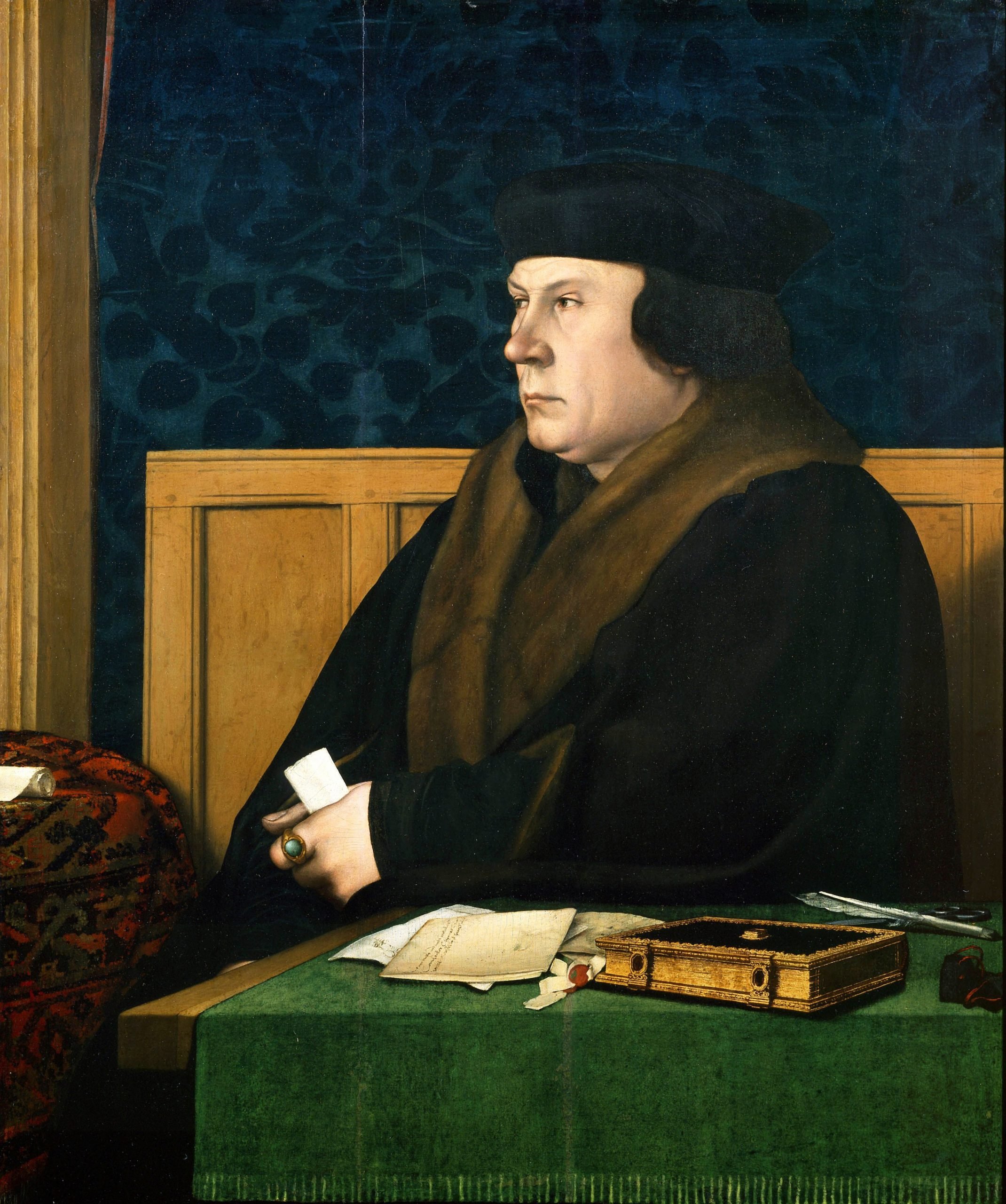
The investigative powers of science and art have combined to identify a bejeweled Book of Hours in Trinity College Cambridge’s collection as belonging to English statesman Thomas Cromwell, who served as King Henry VIII’s chief minister from 1534–40.
Curators at Hever Castle were conducting research ahead of an exhibition comparing Catherine of Aragon and Anne Boleyn when they realized Cromwell owned a version of the same Christian prayer book as Henry VIII’s two wives. The link? A portrait of the political giant by Hans Holbein the Younger.
In the portrait, which dates from 1532–33 and is part of the Frick Collection in New York, an austere-faced Cromwell gazes pensively away from the viewer. The painting celebrates Cromwell’s appointment as Master of the Jewel House (hence the prominence of the book’s jewel) and the tools of his statecraft rest on the table before him: a legal document, a quill, scissors, and his Book of Hours, printed in 1527.
The Hever Castle curators took their hunch to Trinity College and experts now believe its identification makes it the sole remaining object from any 16th-century portrait surviving today.
A portion of the Hans Holbein painting with Cromwell’s prayer book. Photo courtesy Trinity College Cambridge.
Known as the Hardouyn Hours on account of its Parisian printer, the book was donated to Trinity College Cambridge in 1660 by Anne Sadleir who married the grandson of Cromwell’s secretary, Ralph Sadleir, whom historians believe likely inherited the book among other valuable personal objects.
There are two main reasons Cromwell’s prayer book has remained a mystery, Hever Castle curator Dr Owen Emmerson said. For starters, the book is printed and scholarship has overwhelmingly focused on handwritten texts. Anne Boleyn’s version, for example, hasn’t until now received a thorough study by historians. “The second reason,” Emmerson told Artnet News, “is that it has remained uncleaned for many decades with dirt and tarnish masking the finer details of the silver-gilt binding.”
With the lineage firmly established, Trinity’s librarian Nicolas Bell sought to further investigate its materiality by collaborating with other researchers. The gemstones affixed to the front and the clasps were previously believed to be jaspers or jacinths, but a study by Cambridge’s material science department using Raman spectroscopy showed them to be garnets.
Kate McCaffrey [right], assistant curator at Hever Castle, holds Thomas Cromwell’s book alongside Nicolas Bell, librarian of Trinity College, holding one belonging to Anne Boleyn. Photo courtesy Hever Castle and Gardens.
“It has been enormously exciting to position this luxurious creation in the very centre of the court of Henry VIII,” Dr. Bell said in a statement.
Trinity has lent Cromwell’s prayer book to Hever Castle until November 2023 for its exhibition “Catherine and Anne: Queens, Rivals, Mothers,” the first time it has done so since receiving the donation more than 350 years ago.
More Trending Stories:
Is Time Travel Real? Here Are 6 Tantalizing Pieces of Evidence From Art History